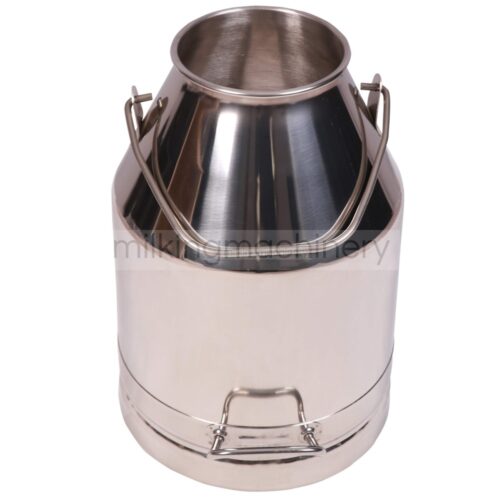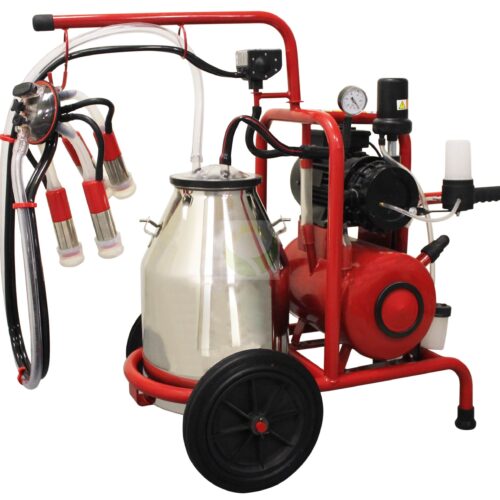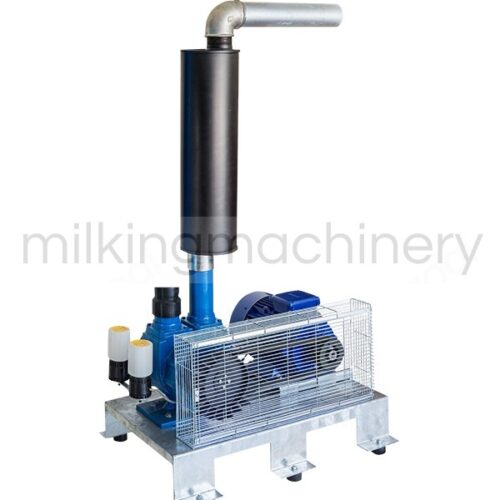A mobile milking machine is a portable device used for extracting milk from dairy animals, such as cows, goats, or sheep. Unlike traditional hand milking, the mobile milking machine automates the milking process, which increases efficiency, reduces labor costs, and improves hygiene.
Key Components:
- Vacuum Pump: This is the heart of the milking machine. It creates a vacuum that helps to draw the milk from the udder through the teat cups. The vacuum is adjusted to ensure that it’s neither too strong (which could cause injury to the udder) nor too weak (which could affect milking efficiency).
- Teat Cups: These are the parts that are attached to the animal’s teats. The cups are designed to fit securely around the teats and use the vacuum to draw out the milk. They are typically made of rubber or silicone to ensure a comfortable fit.
- Milk Collection Container: This is the container or tank where the milk is stored after being extracted. It is designed to maintain hygiene by keeping the milk free from contamination. Many machines include cooling systems in the collection container to keep the milk fresh immediately after milking.
- Pulsator: The pulsator regulates the rhythm of the milking process. It creates alternating pressure (pulses) that mimic the natural sucking action of the animal, which is important for efficient milking and to prevent damage to the udder.
- Hoses and Tubing: These are the connecting parts that transport the milk from the teat cups to the collection container.
- Power Supply: Depending on the model, a mobile milking machine may operate on electricity, a battery, or even a gasoline engine. The mobile aspect means it can be transported easily from one location to another.
Benefits of Mobile Milking Machines:
- Portability: As the name suggests, these machines are designed to be easily moved. This is particularly beneficial for farmers with multiple farms or for those who need to move equipment between locations.
- Efficiency: They allow for faster milking compared to hand milking, helping to save time, especially in larger herds.
- Improved Hygiene: The machine helps maintain a cleaner milking environment and reduces the risk of bacterial contamination that can occur during manual milking.
- Animal Welfare: The automated process can be less stressful for the animal compared to hand milking, as the machine mimics the natural rhythm of a calf’s suckling.
- Labor Savings: Reduces the need for multiple laborers, as one person can operate the mobile machine and milk multiple animals in a shorter amount of time.
Types of Mobile Milking Machines:
- Single-Animal Milking Machines: These are designed to milk one animal at a time. They are often compact and ideal for small-scale dairy operations.
- Multi-Animal Milking Machines: These machines can milk several animals simultaneously or in quick succession. They are more suitable for larger herds.
Mobile milking machines are ideal for small and medium-sized farms, especially in remote areas where access to larger, stationary milking equipment is limited. They offer flexibility, ease of use, and faster milking times, making them an increasingly popular choice among modern dairy farmers.




